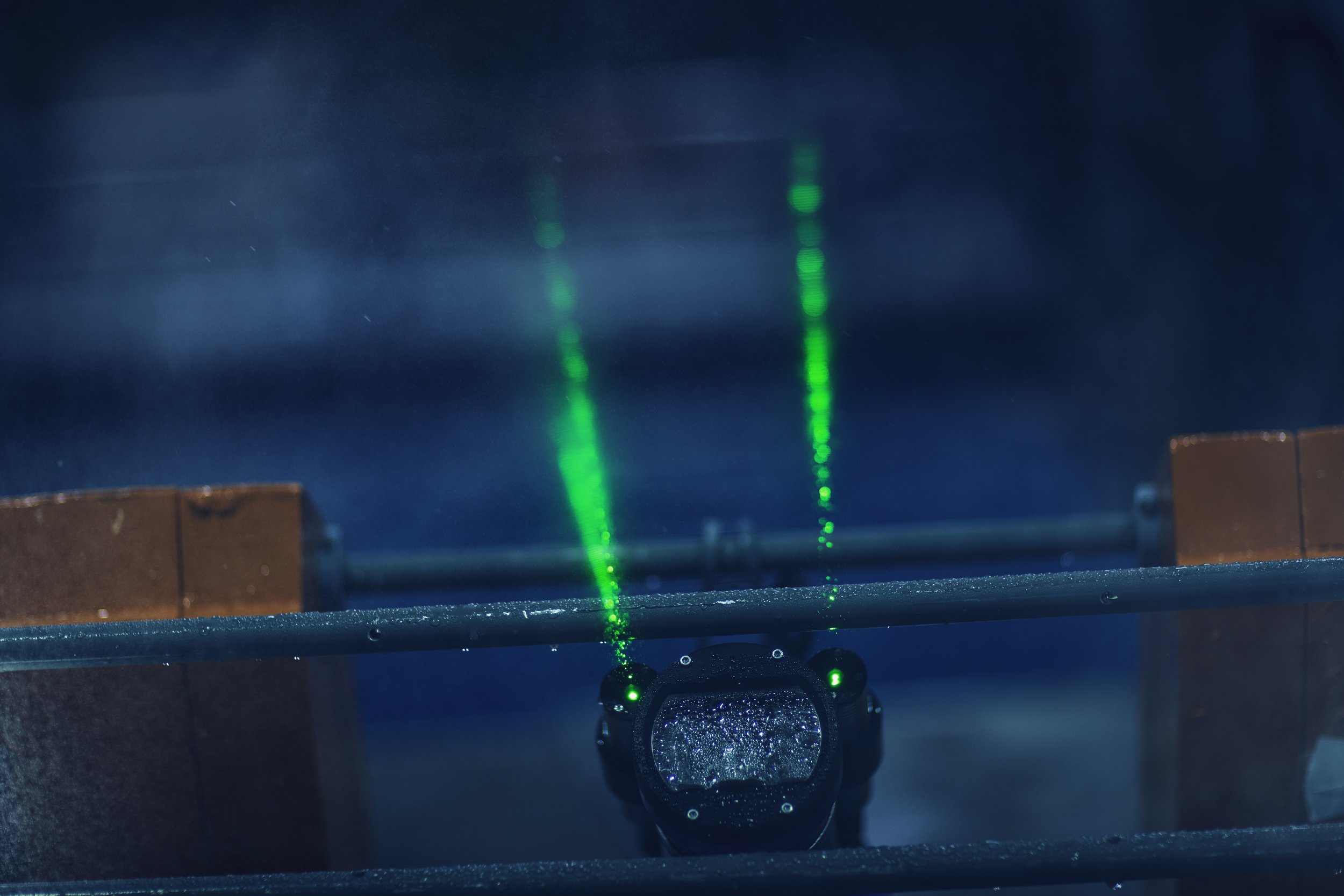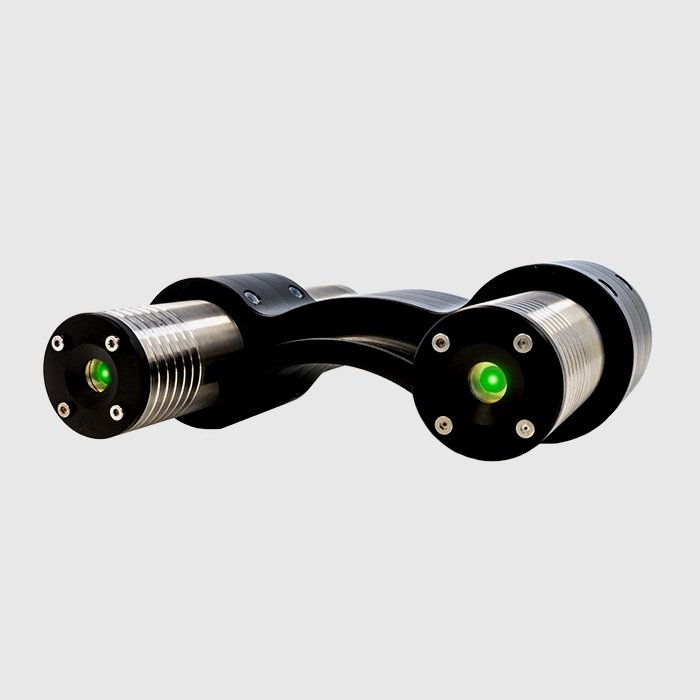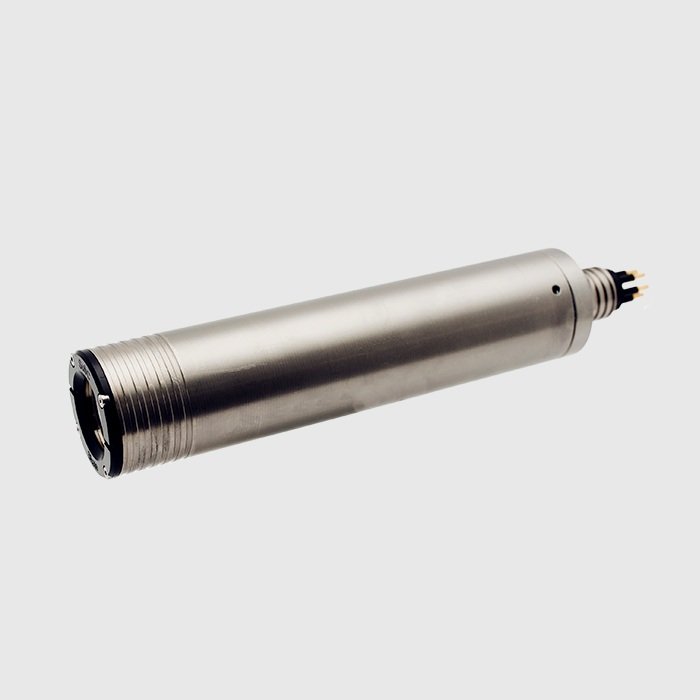FAQ: Underwater Lasers for Subsea Imaging
Underwater lasers play an important role in subsea imaging. They are just one of the many important tools used for ROV surveys, 3D modeling, pipeline inspection, and marine research. Today, we’re breaking down some of the frequently asked questions about underwater lasers and their use in subsea photos and video.
Why use lasers for subsea imaging?
Think of lasers like an underwater ruler. Lasers can provide a visual reference to objects underwater. They can be used to determine the scale of an object, especially for one without a frame of reference. Lasers can also be used to take general measurements or estimate the distance to a subject.
An example of one of the common applications for underwater lasers in subsea imaging is for marine research when measuring study targets. The other is for offshore energy inspections where lasers can be used to estimate the size of holes or cracks in equipment and structures.
What types of underwater lasers are used in subsea imaging?
1.
Parallel Dot Laser
A parallel dot laser, like SubC’s MantaRay laser, is one that is most commonly used in subsea imaging. The laser projects two beams that appear as green dots in images. This type of laser, which is usually the lowest cost form factor of laser, is used to give distance and scale. When attached to a camera, the dots are parallel with the frame of reference. The spacing between the dots gives the distance range and scale information. Parallel lasers can be incredibly precise. The MantaRay laser is calibrated and accurate to have a 10cm spacing at 5m distance.
Parallel dot lasers work best when the scene is perpendicular to the camera sensor, such as a vertical view of the seafloor. Sizing is determined with the parallel dots using simple methods in photo editors. They can be made more accurate with calibrated cameras and specific software.
2.
Line Laser
Line lasers, like SubC’s Skate Mk2 line laser option, are another commonly used laser in subsea imaging. These types of lasers are used for more precision applications for generating data from images. Often this data is used for creating a 3D model or point cloud. Line lasers are also often used for metrology in pipeline inspections, marine species measurements, or habitat mapping.
When using a line laser you may need to adjust your exposure setting on your underwater camera to get the best effect. For example, increasing your shutter speed can make your laser line appear sharper. Get more tips on how to improve your underwater photos and videos here.
3.
Grid Laser
Grid lasers, while less commonly used in subsea imaging, are still very useful. Grid lasers, available as an option with SubC’s Skate Mk2 laser, project hundreds of points onto a scene. This allows for multiple redundant data points for more complex geometry as the points spread out at a predictable angle from the laser. Having multiple evenly spaced points on a target gives many data points to help build geometry.
How are lasers attached to cameras?
Depending on what you choose, your laser might come fully attached to your camera. Or, as is the case with the MantaRay Parallel and Skate Mk2 lasers, it can operate as a stand-alone with an easy attachment option. All SubC lasers are plug and play when coupled with the Rayfin Benthic 6000m or Rayfin Coastal BPC 500m camera.
What is a laser wavelength and why does it matter?
Lasers are used in all sorts of applications beyond subsea imaging. A laser used for eye surgery is different from a laser that is used to scan a supermarket barcode, and so on. This is why different lasers operate at different wavelengths and produce different light. Laser wavelengths run from ultraviolet through the visible light spectrum to infrared.
Lasers used in underwater imaging commonly have a wavelength of 520nm ± 10nm, which means they show to the eye as a green. Green ensures good visibility even at long distances because green light absorbs less in water. Red lasers are also fairly common underwater but red wavelengths get absorbed quicker than green or blue.
How deep can underwater lasers go?
This depends on the housing used for your lasers. SubC’s lasers are rated to 6000m and are built with rugged sapphire and Grade 5 Titanium.
How long can lasers last?
Most lasers can last a number of years, depending on your usage and the application. SubC’s MantaRay Laser has a lifespan (MTBF) of 40,000 hours (4.5 years), making it a very dependable and reliable reference unit. Of course, your laser is not powered constantly for 4.5 years, but you can have confidence that under normal operating conditions, the laser electronics will perform throughout many projects.
Are lasers easily shipped?
This depends on where the laser is manufactured and where it needs to be shipped. The United States has strict laws around lasers being shipped to or through the United States. The U.S. Food and Drug Administration (FDA) regulates medical and non-medical lasers, including the ones used in subsea imaging. SubC’s MantaRay Laser is qualified for shipping within the USA, Canada, and internationally.










